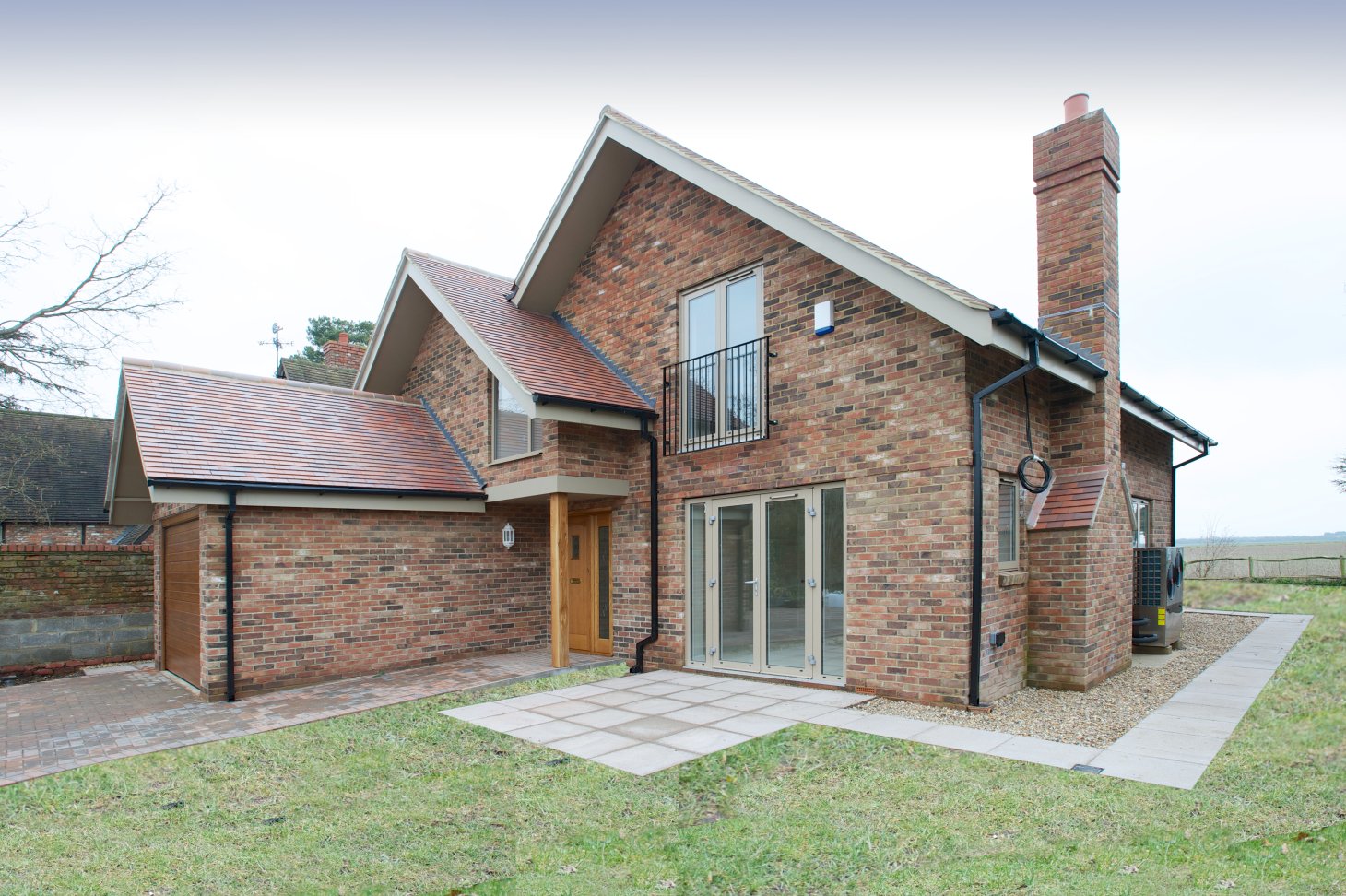
High thermal mass, underfloor heating and an air source heat pump. This self-build project was ahead of the low carbon curve.
A decade ago the designers of this custom-build project in Berkshire, were looking to the future with energy efficiency a top priority.
Along with the H+H Rå Build method of thin-joint aircrete construction, the installation of underfloor heating and an air source heat pump were key features of the build.
Rå Build is a cost-effective way of building homes using masonry and is a great option for self-builds such as this. Notably for this project, Revolution Homes recommended the innovative H+H thin-join system due to its excellent acoustic and thermal properties.
Andrew Edwards, Partner at Revolution Homes remarked that “In this case the Rå Build method was ideal because it offered everything the client specified: a masonry solution, with excellent acoustic and thermal properties and the same build time as timber-frame solutions.”
The thin joint aircrete system was perfect for this project due to its air tightness and thermal mass; absorbing heat well and releasing it slowly throughout the day. H+H Celcon Blocks were used for the floor as the ideal accompaniment to underfloor heating, releasing absorbed heat slowly and avoiding temperature extremes.
The end result of the build was a dwelling with high thermal performance, and importantly a B rating in the Energy Performance Certificate. Together with the air source heat pump and underfloor heating, the use of aircrete created a highly energy efficient home that meets the challenge of low carbon living.